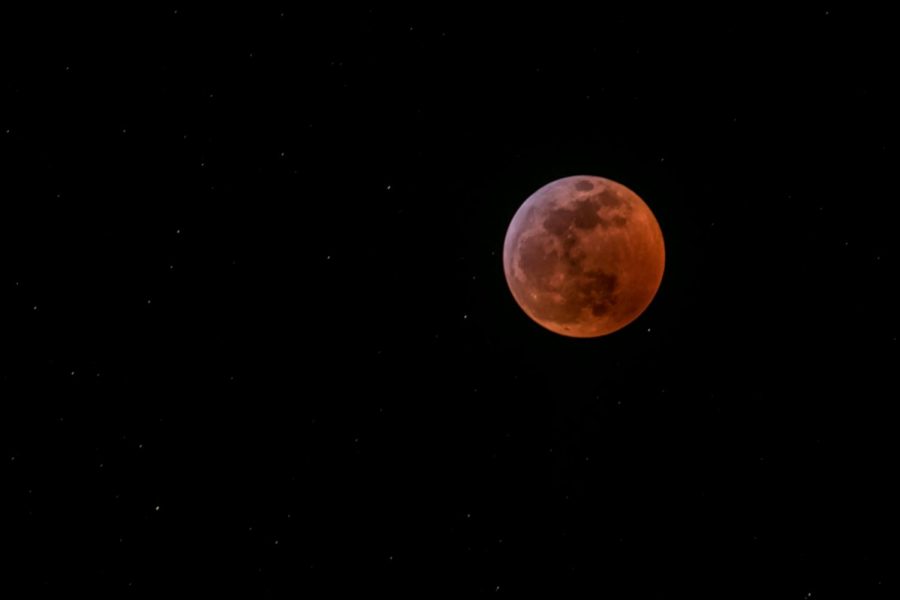Super Blood Wolf Moon
Multi-celestial event lights up the sky
The Super Blood Wolf Moon may sound like a heavy metal band, but, in reality, it is the name of the lunar eclipse that appeared on Jan. 20. If you were in the Americas, Western Europe or Africa, you could see the moon melt away into its notable red glow. So, what is the Super Blood Wolf Moon, and what does its name mean?
The name of this spectacle is a combination of multiple celestial activities and ancient beliefs, which explains its length. According to Space.com, during the eclipse, the moon is at its closest point to the Earth, making it appear larger or “Super.” It also happens to be one of the multiple instances in a year when the moon rotates behind the Earth and is enveloped by the Earth’s shadow, known as a lunar eclipse. Once the moon is completely blocked by the Earth’s shadow, the moon changes color from its familiar white brightness into a rusty red color. These full moons are known as “Blood Moons.”
According to Benjamin Franklin’s Old Farmer’s Almanac, the Algonquin tribe that lived in the New England region called full moons in January “Wolf Moons” because wolves were known to howl in hunger during this time.
Palo Alto High School senior David Hickey, who is also an astrophysics student, saw this amazing sight from the school’s parking lot.
“Mr. [Josh] Bloom had already explained what it exactly was, so I already kinda knew what each part of it symbolized and what times to look for it. It [the class] made it easier to explain it [the event] to my parents, who were also there,” Hickey said. “It was a really cool experience.”




